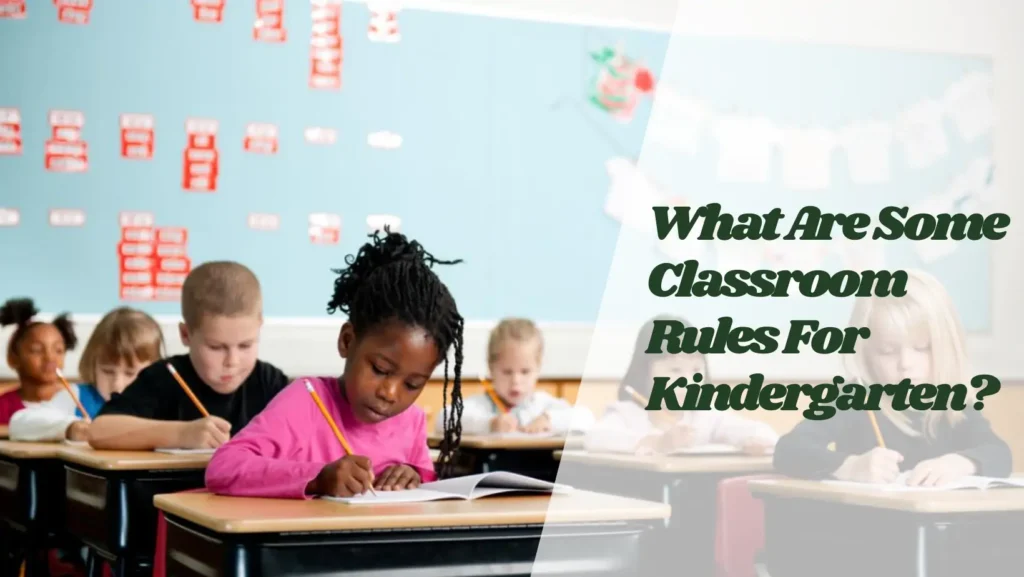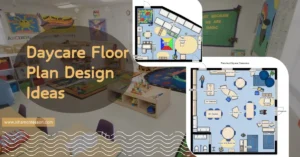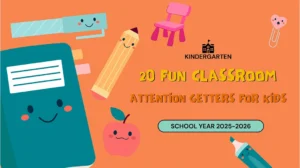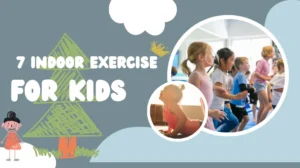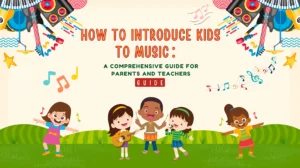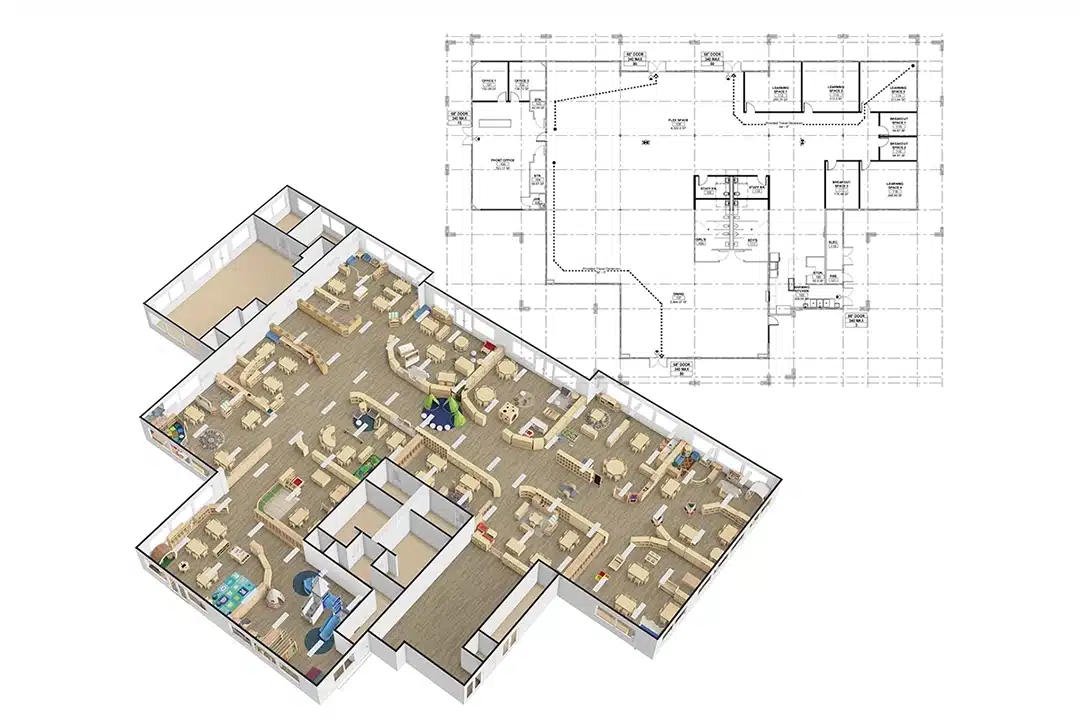Many early-childhood teachers rely on strong Classroom Rules for Kindergartens to guide children’s daily behavior. Without consistent expectations, routines break down, and children often feel unsure about what to do next.
This uncertainty affects learning and classroom harmony. When expectations are unclear, children may interrupt lessons, wander during activities, or struggle to respect personal space.
Establishing a set of simple rules helps prevent these issues. Clear rules teach children responsibility, create predictability, and support smoother transitions throughout the day.
In this guide, you will find 35 Common Classroom Rules for Kindergartens that are practical, developmentally appropriate, and ready to use.
What Are Kindergarten Classroom Rules?
Kindergarten classroom rules are simple, clear expectations that guide young children’s behavior throughout the school day. These rules aren’t meant to intimidate or punish; they serve as a framework that helps children understand what’s expected of them in a structured learning environment.
Unlike older students, kindergartners are just beginning to understand social norms. That’s why classroom rules at this level often focus on basic concepts like kindness, respect, safety, and communication. In many cases, rules are reinforced visually with pictures or modeled through stories and role-play.
In American classrooms, these rules often tie into broader school-wide behavior systems such as PBIS (Positive Behavioral Interventions and Supports) or responsive classroom techniques. Regardless of the system, the core goal remains the same: help children build positive relationships, make safe choices, and develop emotional intelligence, while allowing them to enjoy the learning process.
Why Are Classroom Rules Important?
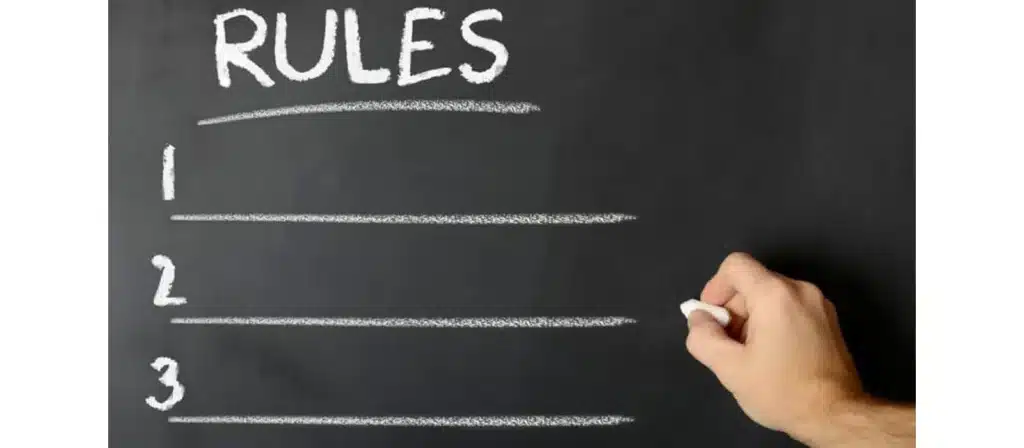
At this age, children are naturally impulsive, curious, and emotionally reactive. Without rules, that curiosity can quickly turn into chaos — and let’s face it, no one learns well in chaos.
They Create a Sense of Safety and Stability
Rules provide young children with structure and predictability, which helps them feel safe and more confident. When students know what to expect and what’s expected of them, they can focus on learning and socializing without anxiety or confusion.
They Support Academic Focus
Clear rules minimize disruptions, allowing teachers to spend more time teaching and students more time learning. With consistent expectations in place, transitions go smoother, and kids stay more engaged in their tasks.
Promoting Positive Behavior
Rules guide children toward respectful and responsible behavior. When expectations are clear and consistently enforced, disruptions decrease and cooperative behavior increases.
Helping Transition and Consistency
Rules ease the shift from home or preschool into a formal school environment by creating consistent routines that children can rely on.
What is the Difference Between Classroom Rules for Kindergarten and Expectations?
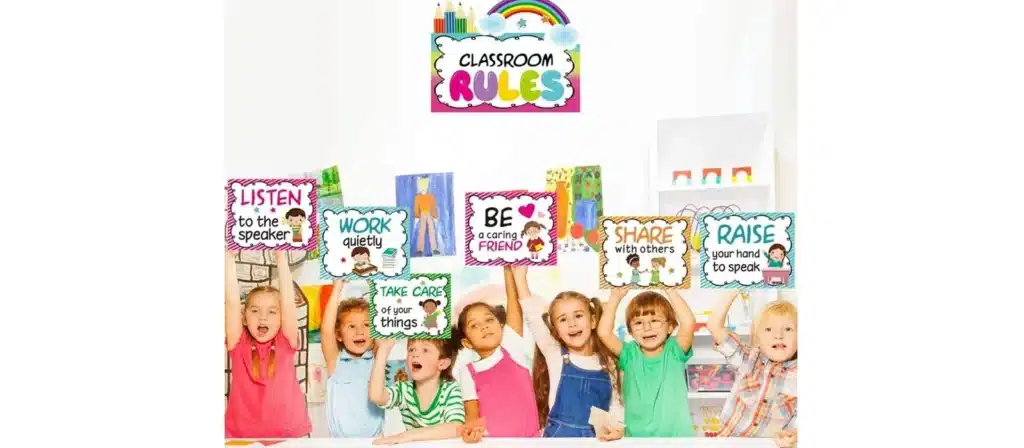
Though often used interchangeably, classroom rules for kindergarten and expectations have distinct roles in shaping a kindergarten environment. Kindergarten Rules are specific dos and don’ts governing student behavior, while expectations are broader goals for student conduct and learning attitude.
| Category | Classroom Rules | Expectations |
|---|---|---|
| Definition | Rules are specific guidelines that children must follow for safety and discipline. | Expectations are broader ideals about behavior and learning outcomes. |
| Focus | Focuses on actions and behaviors, such as “raise your hand” or “be kind.” | Focuses on desired attitudes, such as “be respectful” or “be responsible.” |
| Enforcement | Rules are enforced through praise or consequences based on behavior. | Expectations are modeled and encouraged over time. |
| Clarity | Rules are typically clear and specific. | Expectations may be more general and require interpretation. |
Establishing Clear Classroom Rules for Kindergarten
Clear classroom rules for kindergarten are concise, easy to understand, and directly address desired behaviors. They are the tangible guidelines that students are expected to follow. For example, rules like “Raise your hand to speak” provide clear instructions on what is expected in the kindergarten classroom.
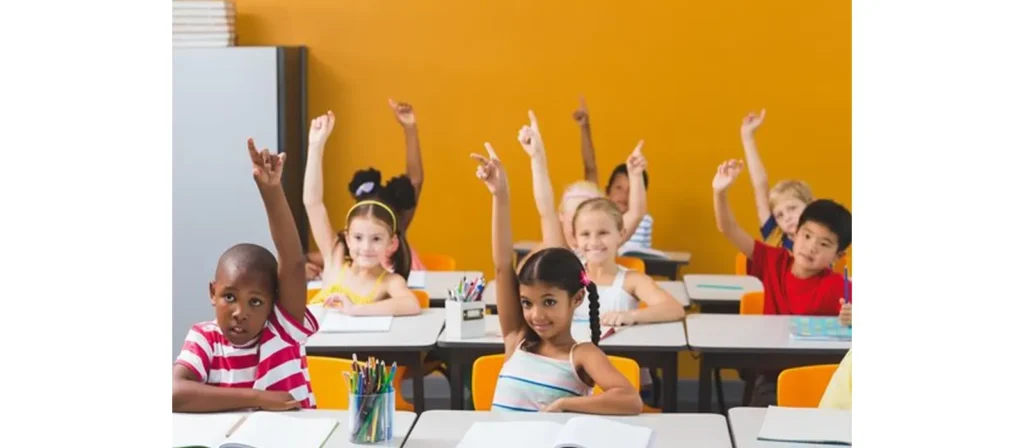
Defining Classroom Expectations
Classroom expectations are more about the ethos and attitude within the classroom. The overarching principles guide students’ approach to learning and interacting with others. Expectations like ‘Be a kind friend’ or ‘Always try your best’ set a positive tone for the classroom environment.
Balancing Classroom Rules for Kindergarten and Expectations
The key to effective classroom management is balancing rules and expectations in the classroom. Rules provide structure, while expectations inspire students to reach higher standards of behavior and learning. Together, they create a comprehensive framework for a well-functioning kindergarten classroom.
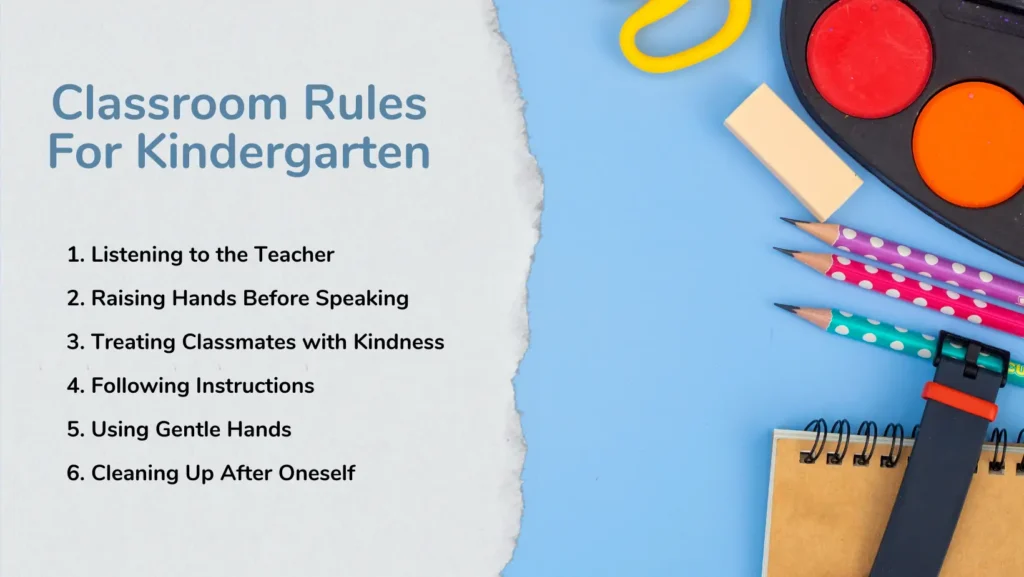
35 Classroom Rules for Kindergartens
Below, you will find 35 practical rules designed for a kindergarten classroom. These are expressed in clear, action‑based language, suitable for young children, and aligned with research on early childhood behavior management. Each rule is followed by a brief explanation/idea to help the teacher implement or model the rule effectively.
- Listen when someone is talking
Helps build attention span and respect. Model the posture: still body, eyes on speaker, quiet mouth. - Raise your hand before speaking or asking a question
Encourages turn‑taking and gives each child a voice. - Follow directions the first time they are given
Keeps routines moving, prevents confusion, and builds habit of active engagement. - Use kind words and gentle hands
Builds social-emotional skills, discourages hitting or harsh comments, fosters kindness. - Use your walking feet inside the classroom
Prevents accidents, creates a calm environment; in the U.S., many schools reinforce “walking feet” vs “running shoes.” - Keep your hands, feet and objects to yourself
Protects personal space and helps children understand appropriate physical boundaries. - Ask before you leave your seat or the classroom
Ensures safety, especially during transitions. - Listen to and follow classroom routines
Routines like lining up, cleaning up or getting ready for lunch are vital in kindergarten and easier when children know the rule. - Take care of classroom supplies and books
Fosters responsibility and respect for shared property. - Clean up your workspace and materials after you finish
Helps children transition, supports ownership of the classroom environment. - Use an inside voice when we’re indoors
Speaking quietly helps keep the classroom calm and makes it easier for everyone to concentrate. - Use words to solve problems
Promotes emotional regulation and conflict resolution. - Try new things even if you feel unsure
Encourages risk‑taking and exploration, which is key in kindergarten. - Share and take turns with classmates
Social skill building, prevents conflict, supports cooperative learning. - Wait your turn and listen when others are speaking
Builds patience and respect. Helps prepare children for group discussions and circle time. - Walk quietly in the hallway and follow the school’s path
Bridges classroom behavior to whole‑school expectations common in U.S. schools. - Raise your hand to go to the bathroom or get a drink
Safety and supervision rule. - Respect the teacher and all adults in the room
Reinforces the adult–child relationship and good citizenship within the classroom. - Respect your classmates’ ideas and work
Encourages listening, empathy and appreciation for differences. - Use art and writing materials carefully
Taking care of supplies ensures that everyone has what they need when it’s time to create or work. - Ask for help when you need it
Encourages independence with support, reduces frustration, builds teacher‑student trust. - Use your words to express feelings when you’re upset
Talking about feelings helps solve problems and avoid conflicts. - Stay in your own space during activities unless invited to join
Helps limit distractions and fosters focus, especially during centers or guided time. - Listen to your classmates when they share or perform
Builds respect and attention during peer‑led activities or presentations. - Help others when you can
Promotes kindness, collaboration and community in the classroom. - Keep our classroom clean and tidy
Everyone should do their part to keep the space neat so it’s nice to work and play in. - Follow bathroom rules
Good hygiene and privacy are key lessons. - Stay seated during instruction unless told otherwise
Explanation: Helps minimize disruptions during whole‐group teaching times. - Bring and return your belongings and projects properly
Encourages organization, responsibility and smooth transitions between home and school. - Include others in play
Nobody likes feeling left out. This rule builds empathy. - Line up quietly when it’s time to move to another place
Transitions are key in early childhood; lining up quietly supports smooth movement and fewer disruptions. - Use polite language: please, thank you, excuse me
Encourages manners and social grace, common in U.S. school culture. - Try your best every day and be proud of your efforts
Putting in your best effort helps you grow and feel good about your progress. - Stay on task during independent work and playtime
Helps maximize learning time and builds self‑regulation, foundational for later grades. - Have fun, be yourself, and show respect to everyone around you
Enjoying school while treating others kindly creates a happy place for learning
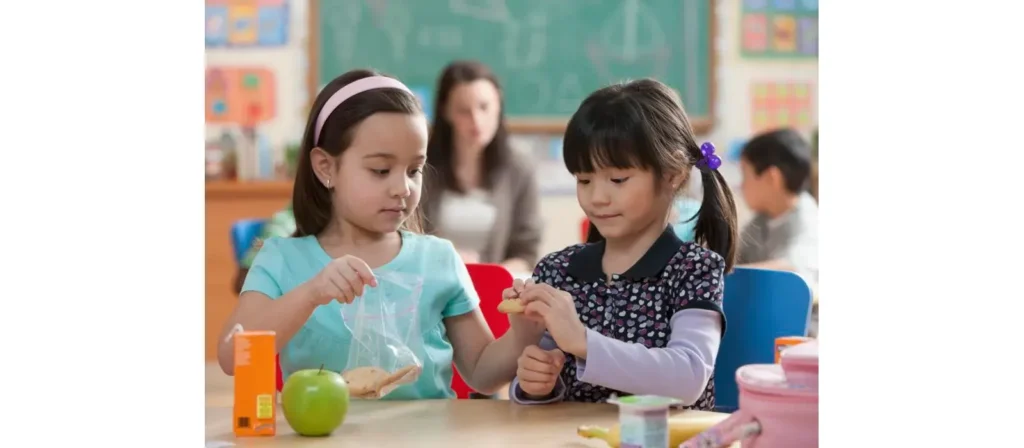
How to Set Rules for Your Kindergarten Classroom?
Creating effective classroom rules for kindergarten isn’t just about listing a few dos and don’ts on the board. A thoughtful approach to rule-setting can make a significant difference in how smoothly your classroom runs and how supported your students feel. The following strategies will help you create classroom rules that are clear, meaningful, and developmentally appropriate.
- Keep Rules Simple:
Young children do best with short, direct rules they can remember. Use clear language like “Use kind words” or “Raise your hand to speak.” Avoid complicated sentences or abstract concepts. Simplicity helps students focus on what’s expected without confusion. - Make Rules Reasonable:
Set expectations that are fair and appropriate for your students’ developmental level. Kindergarteners are still learning how to sit still, wait their turn, and manage big emotions. Your rules should reflect what is realistic for this age group, not what’s ideal. - Involve Students:
Letting students help shape the rules gives them ownership. Ask questions like, “What helps us have fun and stay safe?” Their ideas might be funny or unexpected, but you can guide their input into meaningful rules they’re more likely to follow. - Have Visual Cues:
Pictures, posters, and hand signals can reinforce the rules every day. Most kindergarteners are still learning to read, so visual aids are essential. Keep them colorful, simple, and placed at eye level to remind students gently throughout the day. - Offer Rewards:
Positive reinforcement builds motivation and strengthens desired behaviors. Use small, consistent rewards like verbal praise, stickers, or extra playtime. Rewards don’t need to be extravagant—they just need to be meaningful and timely. - Clearly State the Consequences:
Young children need to know the cause-and-effect relationship between actions and outcomes. Keep consequences simple, fair, and immediate, like a brief time-out or missing part of playtime, so they associate behavior with impact. - Use Positive Language:
Instead of saying “Don’t run,” say “Use walking feet.” Framing rules in a positive way tells children what to do, not just what to avoid. This encourages cooperation and keeps the classroom tone supportive and constructive. - Don’t Overdo It:
Too many rules can overwhelm young kids. Aim for five to seven essential rules that cover broad behaviors. You can introduce more as needed, but keep the core list short so it’s easy to remember and practice.
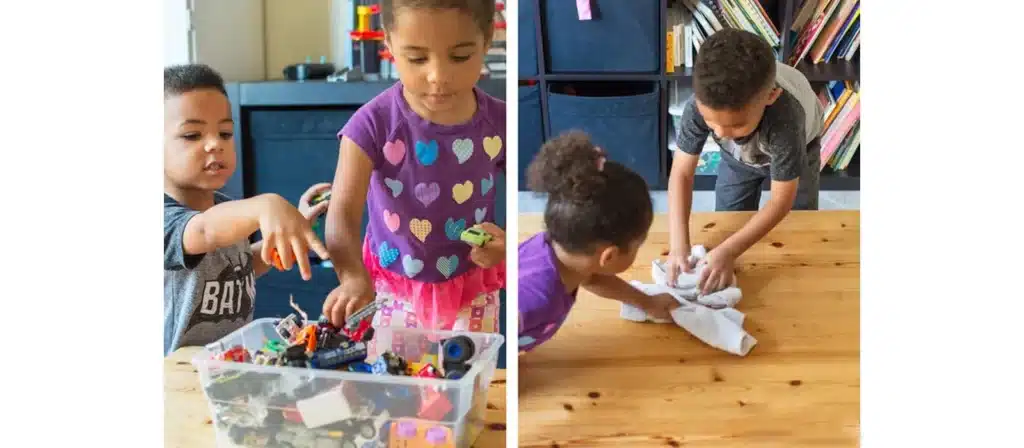
Classroom Rules for Kindergarten – Transitioning Between Activities

Transitioning between activities is common in a kindergarten classroom, and having clear rules in place can help streamline the process and maintain a productive learning environment.
- Listen for the Transition Signal:
To ensure that all students are aware of the upcoming transition, it’s important to establish a signal that indicates when it’s time to move on to the next activity. This signal can be a chime, a song, or a specific phrase. By actively listening for the transition signal, students are prepared for the change and can smoothly transition to the next activity. This practice is a key part of preschool rules for the classroom, ensuring students are ready for what’s next. - Line Up Quietly:
When moving from one classroom area to another, students should line up quietly and orderly. This rule helps maintain order and prevents chaos during transitions. Classroom kindergarten rules should include lining up in a straight line and keeping their hands to themselves, a fundamental rule for maintaining peace and safety in the classroom. Teachers can model and practice the expected behavior, reinforcing kindergarten rules for the classroom so students can understand and follow these rules effectively. - Use Transition Time Wisely:
Transitions can be a valuable opportunity for learning and practicing important skills. Teachers can establish a rule encouraging students to use transition time wisely, such as reciting the alphabet, counting, or engaging in a quick brain break activity. By utilizing this time, teachers reinforce classroom rules and activities for kindergarten that keep students engaged and maximize instructional time. Making the most of these moments aligns with the best classroom rules for kindergarten and helps foster a productive learning environment.
By implementing these rules for transitioning between activities, teachers can create a smooth and efficient learning environment where students are prepared for each new task or lesson. These simple but effective practices are essential for ensuring a well-organized classroom with minimal disruptions during transitions.
Classroom Rules for Kindergarten – Listening and Following Instructions
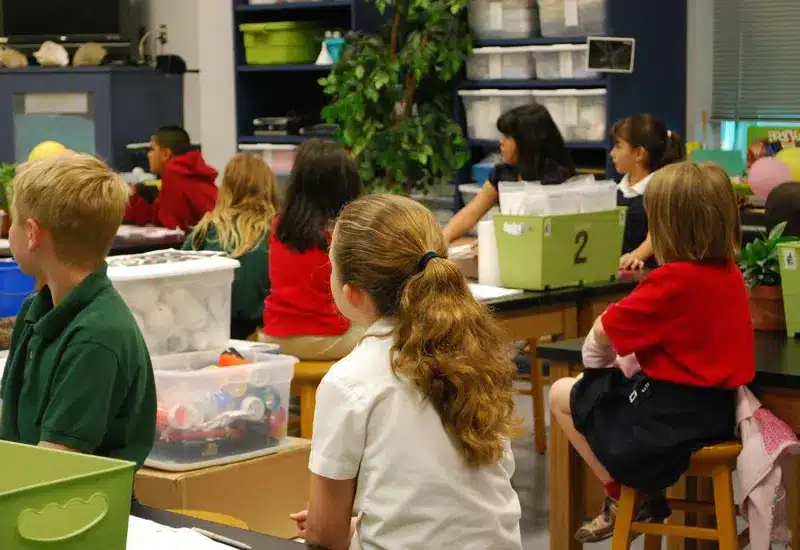
Listening and following instructions are essential skills that students need to develop to succeed academically and socially. Establishing rules for the classroom kindergarten that promote attentive listening and adherence to instructions helps create a focused and engaged learning environment.
- Eyes on the Speaker:
To ensure that students actively listen, create classroom rules for kindergarten classes that encourage students to focus on the speaker. This rule helps minimize distractions and keeps students engaged, whether the speaker is the teacher or a classmate. Teachers can reinforce this behavior by modeling active listening and offering gentle reminders, ensuring students follow the best classroom rules for kindergarten. - Raise Your Hand to Speak:
To promote respectful communication and prevent interruptions, students are asked to raise their hands if they have something to say. This is a core classroom rule for kindergarten and teaches children to take turns and wait for an opportunity to participate in a discussion. By modeling and practicing these classroom rules for kindergarten students, teachers create a classroom culture that values active listening and respectful communication. - Ask for Clarification:
At times, students may not fully understand the instructions given. Please encourage students to seek clarification when needed and allow them to ask questions when unsure what to do.
Classroom Rules for Kindergarten – Sharing and Taking Turns

Learning to share and take turns are important social skills students need to develop in kindergarten. By establishing rules that promote sharing and taking turns, teachers create a cooperative and inclusive learning environment where all students feel valued and included.
- Share Materials and Toys:
Students should be encouraged to share classroom materials and toys to foster community and cooperation. Emphasize the importance of taking turns and allowing others to use materials. Teachers can provide guidance and model appropriate sharing behaviors. - Wait for Your Turn:
A rule that emphasizes waiting for one’s turn is essential in promoting turn-taking and preventing conflicts. Students should understand that they must wait patiently for their opportunity to participate in an activity or use a particular resource. Teachers can facilitate this rule by providing visual cues, such as a designated waiting area, and praising students who demonstrate patience and respect for others. - Use Time-Timers:
Time-timers can be a helpful tool to represent the concept of turn-taking and sharing visually. Students can better understand and manage their waiting time using a timer showing the turn duration. Teachers can introduce this rule for pre k classroom by explaining how time-timers work and gradually increasing the turn duration as students become more familiar with the concept. This not only helps with rules of the classroom preschool, but also promotes the understanding of time management from an early age. - Use Kind Words and Gestures:
Effective sharing and turn-taking require students to use kind words and gestures when interacting with their peers. Saying “please” and “thank you” and using gentle touches. Teachers create a positive and inclusive classroom culture by promoting kindness in sharing and turn-taking.
Classroom Rules for Kindergarten – Using Classroom Materials and Supplies
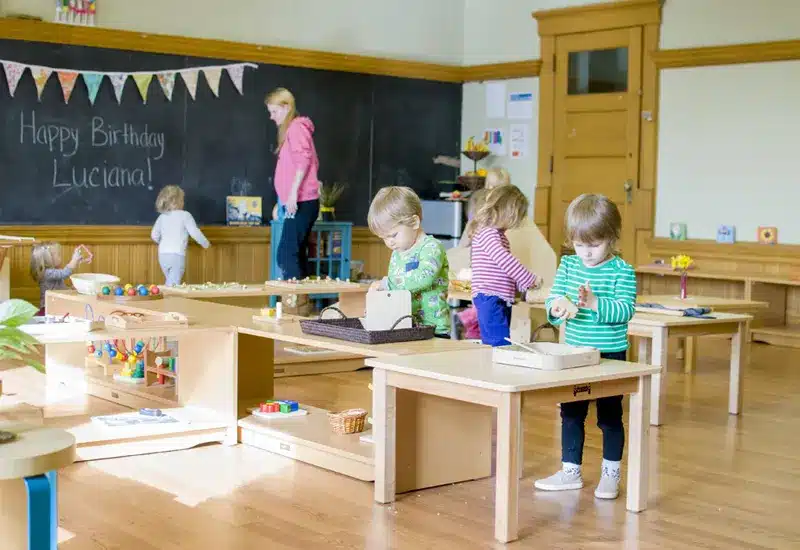
By establishing rules that promote proper use and care of materials, teachers help students develop a sense of responsibility and respect for their learning environment.
- Handle Materials with Care:
Students should be encouraged to handle classroom materials with care. Teachers can demonstrate the proper handling of materials and provide guidance when students need help. By reinforcing this rule, teachers promote a sense of ownership and respect for classroom resources. - Put Materials Back in their Designated Places:
Students should be encouraged to return materials to their designated places after use to maintain an organized learning environment. Students must clean up after themselves and return materials to their proper locations. Teachers can provide clear labels and visual cues to help students identify where materials belong. - Share Materials Equitably:
Students should understand the importance of sharing materials equitably with their peers to ensure that everyone has access to what they need. This concept is crucial in rules of the classroom for preschool and helps promote fairness and cooperation. Teachers can model and reinforce this rule for pre-k classroom by monitoring students’ interactions during activities and providing guidance when necessary. This ensures that all students feel included and learn the value of cooperation and sharing within a positive classroom environment.
Classroom Rules for Kindergarten – Personal Space and Behavior
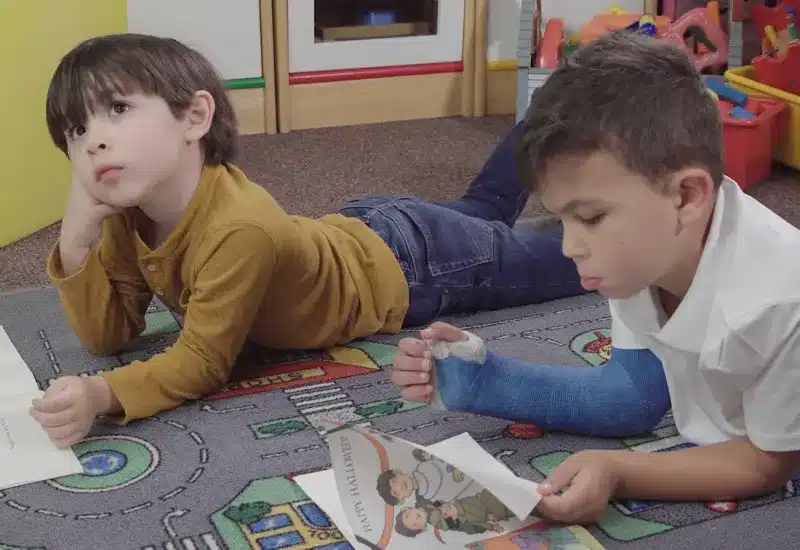
One of the fundamental aspects of creating a positive learning environment in a kindergarten classroom is establishing rules for personal space and behavior. This teaches children about boundaries and helps them develop self-control and respect for others.
- Respect Personal Space:
They should understand that everyone has their bubble and it should be respected. Teachers can explain this concept to students using visual aids or role-playing activities, integrating this idea into kindergarten classroom rules. By respecting personal space, students learn to be mindful of others and develop a sense of empathy. - Keep Hands and Feet to Yourself:
Another crucial rule in a kindergarten classroom is to keep hands and feet to oneself. This rule helps prevent physical conflicts and ensures a safe learning environment. Teachers can emphasize the importance of this rule by explaining that physical contact should only be made with permission, such as during a high-five or a handshake. - Use Kind Words and Actions:
Kindergarten is an ideal time to teach children the importance of using kind words and actions. Teachers can encourage students to express themselves positively and respectfully, using phrases like “please” and “thank you.” Students should also be taught to avoid name-calling or using hurtful language.
Different Rules Set to Set Clear Expectations
Classroom rules are an essential tool for guiding children’s behavior, but these rules must be carefully aligned with the expectations of the learning environment. It’s not just about setting rules for the sake of order; the rules should support the specific expectations we have for children’s behavior, learning outcomes, and overall development. The rules you set in a kindergarten classroom should be clear, straightforward, and linked directly to your educational goals.

Expectation 1: Foster Respect and Cooperation Among Peers
In a kindergarten classroom, promoting respectful behavior and cooperation among children is key to creating a harmonious environment. The rules for fostering respect should be simple yet powerful, ensuring that children understand how to interact with their peers.
Related Classroom Rules:
- Be Kind to Others: This rule encourages students to treat each other with kindness, promoting an atmosphere of empathy and cooperation.
- Listen When Someone is Speaking: Respecting others’ voices and opinions is fundamental to learning how to engage in group activities and discussions.
- Take Turns and Share: Teaching children how to take turns and share resources helps build positive social interactions and cooperation.

Expectation 2: Promote Safe and Orderly Behavior
Safety is a crucial expectation in any kindergarten classroom. It’s vital that children know how to act in a way that ensures their own safety and that of others. The rules set to encourage safety should be clear and easy for children to follow, emphasizing physical safety and emotional well-being.
Related Classroom Rules:
- Keep Your Hands and Feet to Yourself: This rule promotes physical safety by preventing unwanted physical contact and promoting personal space.
- Walk, Don’t Run: This helps prevent accidents and injuries by guiding children to move safely within the classroom.
- Use Materials Safely: Teaching children to handle classroom materials carefully, such as scissors or pencils, minimizes the risk of accidents.
- Tell a Teacher if You Feel Uncomfortable or Unsafe: This rule encourages children to speak up if something doesn’t feel right, fostering a safe emotional environment as well.

Expectation 3: Encourage Self-Regulation and Independence
As children grow, they need to learn how to regulate their own actions and make decisions that are beneficial for themselves and others. Self-regulation is an important skill that kindergarteners begin developing, and the classroom rules should support this growth by encouraging personal responsibility.
Related Classroom Rules:
- Raise Your Hand to Speak: This rule teaches children how to wait for their turn to speak, helping them develop patience and the ability to self-regulate during discussions.
- Clean Up After Yourself: Children learn responsibility by taking care of their materials and cleaning up after activities, which reinforces self-reliance.
- Follow Directions the First Time: This encourages children to listen carefully and act promptly, reinforcing the importance of self-discipline.

Expectation 4: Foster a Positive Learning Environment
A positive and engaging learning environment is key to nurturing curiosity, creativity, and academic development. The classroom rules you set should foster an atmosphere where students feel safe, supported, and motivated to learn.
Related Classroom Rules:
- Be Ready to Learn: This rule sets the expectation that children come prepared and open to learning, whether it’s by sitting attentively during lessons or having materials ready.
- Use Your Inside Voice: This rule encourages a quiet and focused environment, which is crucial for keeping distractions at bay and promoting concentration.
- Be Patient and Wait Your Turn: This rule teaches children to be patient in their interactions with others, whether they’re waiting for a turn on a game or during activities like circle time.

Expectation 5: Develop Emotional and Social Skills
The kindergarten classroom is a space where children start learning the social and emotional skills necessary for life. The rules set should support children’s development in areas such as empathy, cooperation, and emotional regulation.
Related Classroom Rules:
- Help Your Classmates When They Need It: Encouraging helpfulness and empathy towards peers allows children to develop strong emotional intelligence.
- Say “Please” and “Thank You”: This rule promotes politeness and teaches children basic social manners, which helps build positive relationships.
- Control Your Emotions: This rule helps children understand how to recognize and manage their feelings in healthy ways, fostering emotional growth.
Where Should Classroom Rules Be Placed?
Proper placement of classroom rules ensures that they are always visible and easily accessible to students. This visibility helps reinforce the rules and reminds children of the daily expectations.
Classroom rules should be placed in prominent, visible locations within the classroom. Ideal spots include near the door, at the front of the classroom, and eye level for children. This visibility ensures students can easily see and reference the rules, reinforcing their importance and helping them remember the expectations.
Having rules in clear view serves as a constant reminder for children, helping them internalize the guidelines and follow them consistently.

How to Introduce Classroom Rules to Kindergarteners on the First Day of School?
The first day of school is an excellent opportunity to introduce classroom rules to your kindergarten students. Here’s a simple strategy to get started:
- Start with a Discussion: Begin by talking to the students about the importance of rules in the classroom. Explain that rules help everyone feel safe, happy, and ready to learn. Use simple language and relatable examples that make sense to young children.
- Create Visual Reminders: Use pictures or posters to illustrate the rules. Visuals are especially helpful for young learners who may not be able to read yet.
- Role-Play: Demonstrate the rules through role-playing. For example, show students how to raise their hands to speak or how to use kind words when talking to others.
- Create a Class Promise: Involve the students by creating a class promise. Have them repeat the rules together and agree to follow them, which fosters a sense of responsibility and ownership.
- Positive Reinforcement: Praise students who follow the rules right away. Positive reinforcement encourages students to continue following the rules.
How to Teach Classroom Rules to Kindergarten

Communicating classroom rules to kindergarteners is a skill that requires patience, creativity, and clarity. The most effective method is through visual aids such as colorful classroom rules posters for kindergarten, images, symbols, and related classroom rules videos for kindergarten that represent each rule. These visual cues help children remember and understand the rules better.
Additionally, storytelling and role-playing can be powerful tools in conveying these rules. Children are likelier to engage and internalize the rules when participating in an interactive story or play. This method allows them to experience the consequences of following or breaking the basic rules for kindergarten classroom in a controlled, safe environment.
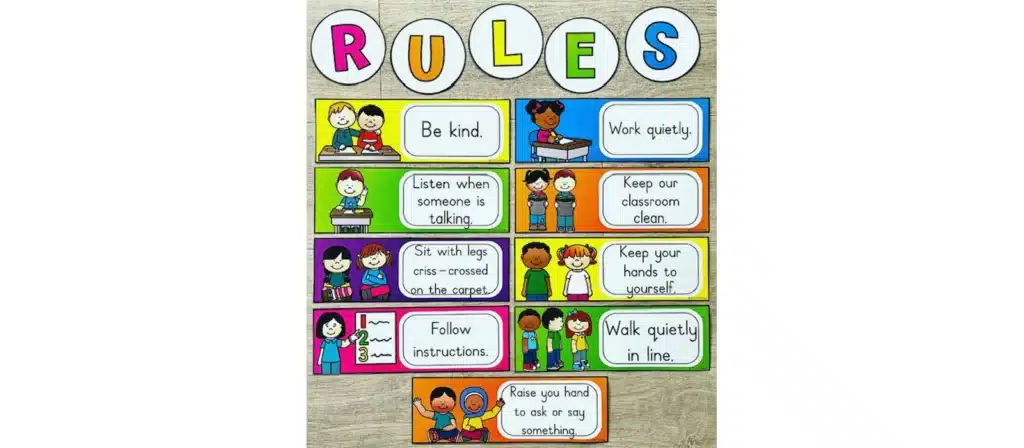
Regular discussions about the rules and their importance should also be part of the daily routine. This helps in reinforcing the rules and provides opportunities for children to ask questions and express their thoughts.
Teachers must also model the behavior they expect from their students. Children learn by observing adults, so when teachers consistently follow the same rules, it reinforces their importance and encourages children to do the same.
How Do I Reward Children for Following Classroom Rules?
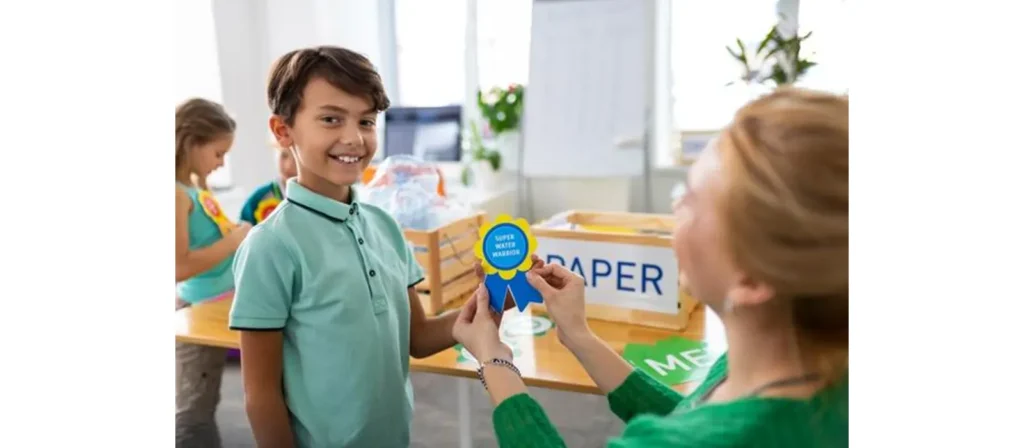
Rewarding children for following classroom rules is a powerful tool in reinforcing positive behavior. It motivates students and encourages them to adhere to the guidelines consistently. Rewards should be meaningful and aligned with the classroom’s goals and values.
A reward system, whether a sticker chart, a reward jar, or earning extra playtime, can be highly effective. These systems should recognize individual and group accomplishments, fostering a sense of individual responsibility and teamwork.
Positive reinforcement goes beyond tangible rewards. Verbal praise, acknowledgment in front of peers, or a note to parents about their child’s good behavior are also impactful ways to reward adherence to preschool classroom rules. This type of reinforcement boosts self-esteem and reinforces the desired behavior.
How do I Handle Kindergarten Classroom Infractions?
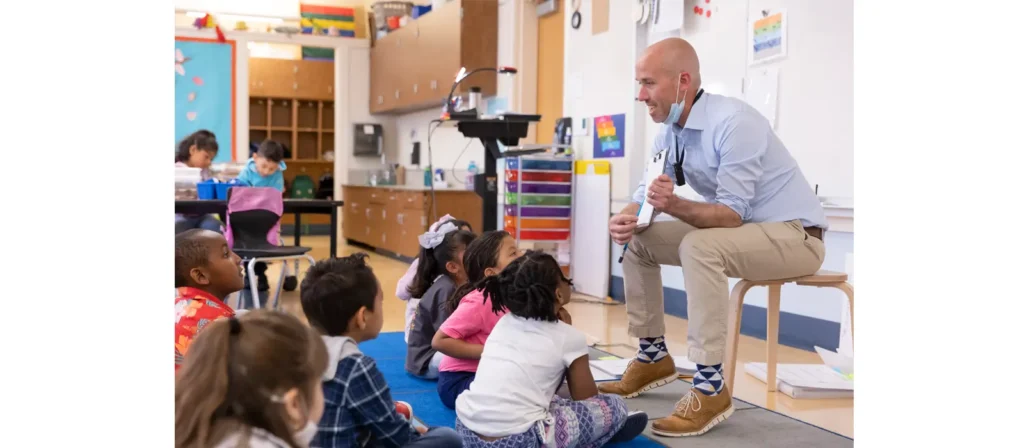
Handling infractions in a kindergarten classroom requires a delicate balance of firmness and understanding. The approach should be consistent, fair, and geared towards teaching rather than punishing. The goal is to help children learn from their mistakes and understand the importance of following rules.
Infractions should be seen as teachable moments. Discussing with the child why the rule is important and what they can do differently next time turns a negative incident into a learning opportunity. This approach fosters understanding and personal growth.
Consistency is key in handling infractions. All students should be aware of the consequences of breaking the rules. These consequences should be fair and directly related to the infraction. For instance, if a child makes a mess, having them help clean up is a relevant consequence.
Building a Supportive Community Among Educators and Parents
Regular communication with parents about classroom rules and their rationale ensures consistency between home and school. Workshops and meetings with parents can also help create a unified approach to discipline and rule adherence.
What Role Do Classroom Layout and Design Play in Classroom Rules for Kindergarten?
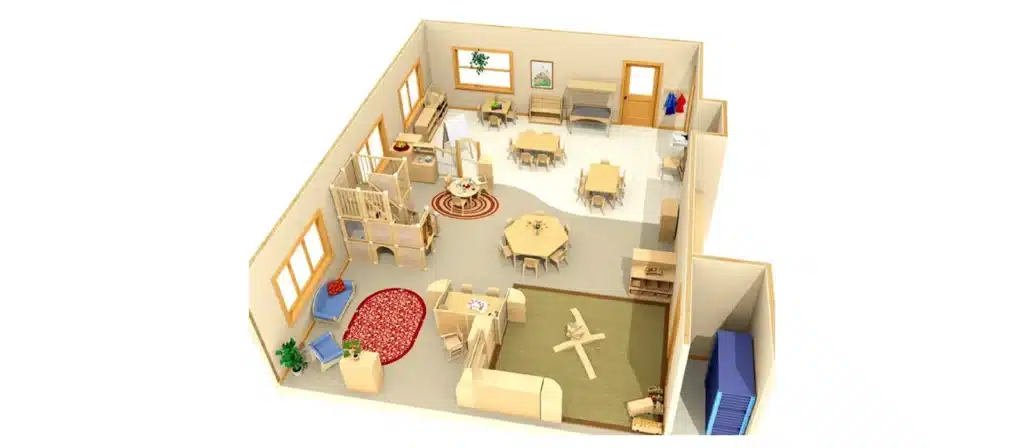
Don’t overlook the role of kindergarten classroom layout and design in enforcing rules. A well-organized classroom with clearly defined areas for different activities helps reduce chaos and confusion. This organization assists children in understanding where and when certain behaviors are appropriate.
For example, a cozy corner with soft furnishings can be designated for quiet activities like reading, signaling children that this is a space for calm and focus. On the other hand, an open area with durable, easy-to-clean surfaces and materials can be set aside for art and craft activities, where creativity and messiness are encouraged.
FAQs
- How can teachers reinforce classroom rules for kindergarten?
Teachers can reinforce rules by providing positive reinforcement, using visual reminders, modeling appropriate behavior, and offering gentle reminders when needed. - How do classroom rules help with classroom management?
Classroom rules provide a clear structure, making it easier for teachers to manage the class, keep students focused, and reduce disruptions, leading to a more productive and peaceful learning environment. - At what age should classroom rules be introduced?
Classroom rules should be introduced as early as kindergarten to help young students understand expectations and develop important social and academic habits. - Can classroom rules be changed throughout the year?
Yes, classroom rules can be adjusted to suit the evolving needs of the students as they grow and develop, but it’s important to maintain consistency in expectations. - What makes a good classroom rule for kindergarten?
A good rule is simple, clear, and easy for children to understand, focusing on safety, respect, and responsibility. - How do classroom rules help in developing social skills?
Classroom rules encourage respectful interactions, sharing, and cooperation, which are essential for building positive relationships. - How can I motivate students to follow the rules?
Use positive reinforcement, praise good behavior, and incorporate fun activities to keep students engaged and motivated to follow the rules. - Are classroom rules the same as classroom expectations?
Classroom rules are specific behaviors that are expected in the classroom, while expectations encompass broader goals and behaviors that teachers aim to foster in their students.
Conclusion
Classroom rules for kindergarten are the framework for a safe, respectful, and engaging learning environment. These rules promote cooperation, respect, and responsibility and teach important life skills such as empathy and self-control. By setting clear expectations and consistently reinforcing rules, teachers can help students develop positive habits and behaviors that will benefit them throughout their academic journey.
If you would like to know more about our nursery or if you would like to purchase or refurbish furniture for your nursery, please contact us. We are a kindergarten furniture manufacturer with 20 years of experience in the education industry, serving more than 2,000 kindergartens and educational institutions worldwide. We are a one-stop shop for all your needs.

